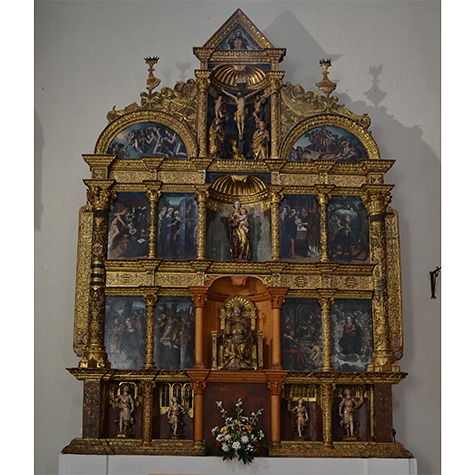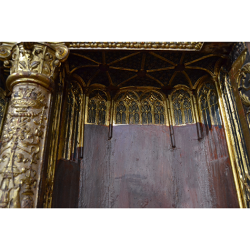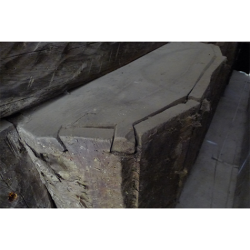Catalogue
THE RELIEFS OF THE MAIN ALTAR OF SAN MARTIN
TYPOLOGY
The altarpiece of Saint Martin is a combined work in which woodcarving on the predella and centre section of the altarpiece cohabitates quite happily with paintings along the side sections, something that was quite characteristic of Spanish works, but vastly different to Flemish ones in which paintings were normally reserved for wings.
The altarpiece comprises a predella, two main horizontal sections and a frontispiece or attic distributed vertically into five sections and is, therefore, an early example of the incorporation of Renaissance aesthetics in the Kingdom of Castile, a novelty that suggests the intervention of master woodcarver, Pedro de Guadalupe.
The interior architecture of the compartments on the predella maintain their inspiration in Flemish models in the way they replicate the sensation of spaciousness of temples, complete with ribbed vaults and side walls decorated to simulate their having glass windows. Overall, both the way in which the compartments were made (please refer to the Support section) and the decoration of the niche used to house the figure of the saint to whom the altarpiece was dedicated suggest the altarpiece was manufactured locally. The ambiguity of the style used in the whole must also be emphasised.



